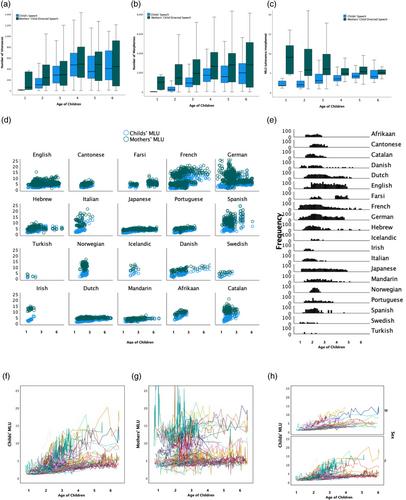The effects of family, culture and sex on linguistic development across 20 languages
Abstract
Languages vary in their complexity; caregivers vary in the way they structure their communicative interactions with children; and boys and girls can differ in their language skills. Using a multilevel modelling approach, we explored how these factors influence the path of language acquisition for young children growing up around the world (mean age 2-years 9-months; 56 girls). Across 43 different sites, we analysed 103 mother–child pairs who spoke 3,170,633 utterances, 16,209,659 morphemes, divided across 20 different languages: Afrikaans, Catalan, Cantonese, Danish, Dutch, English, Farsi, French, German, Hebrew, Icelandic, Irish, Italian, Japanese, Mandarin, Norwegian, Portuguese, Spanish, Swedish and Turkish. Using mean length of utterance (MLU) as a measure of language complexity and developmental skill, we found that variation in children's MLU was significantly explained by (a) between-language differences; namely the rate of child MLU growth was attuned to the complexity of their mother tongue, and (b) between-mother differences; namely mothers who used higher MLUs tended to have children with higher MLUs, regardless of which language they were learning and especially in the very young (<2.5 years-old). Controlling for family and language environment, we found no evidence of MLU sex differences in child speech nor in the speech addressed to boys and girls. By modelling language as a multilevel structure with cross-cultural variation, we were able to disentangle those factors that make children's pathway to language different and those that make it alike.
Research Highlights
- The speech of 103 mother–child pairs from 20 different languages showed large variation in the path of early language development.
- Language, family, but not the sex of the child, accounted for a significant proportion of individual differences in child speech, especially in the very young.
- The rate at which children learned language was attuned to the complexity of their mother tongue, with steeper trajectories for more complex language.
- Results demonstrate the relative influence of culture, family, and sex in shaping the path of language acquisition for different children.


 求助内容:
求助内容: 应助结果提醒方式:
应助结果提醒方式:


